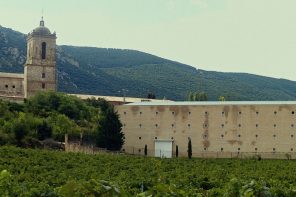Close your eyes and envision a warm, sandy coastline, dotted with rugged cliffs and foamy sea caps. Gentle waters splash against the shore and salty sea breezes fill the air, while a few scattered surfers crash their weight against the waves that rise and fall along the shoreline. Though it may be hard to believe, these sandy coasts share their wealth with more than just eager beach-goers and enthusiastic swimmers – they’re also home to some of the world’s oldest vines. Introducing Colares, Portugal’s smallest, yet arguably richest, claim to viticultural fame.
Situated along the sandy coastlines of the Atlantic, the vineyards of Colares hardly resemble your average vineyard. Vines are trained low to the ground to ward off harsh ocean winds, while sandy, footprint-trodden soils look more like resort floors than traditional viticultural areas. Though it’s these sandy, unconventional soils that give Colares its historical importance, claiming the title as one of Europe’s ancient old-vine sites.
During the late 1800s, the phylloxera plague arrived in Europe, devastating nearly all of the continent’s viticultural zones. However, it was soon found out that the vineyard pest couldn’t survive in the rare, sandy soils of a few select appellations. Along with various island regions, such as Santorini and the Canary Islands, Colares remained immune to the root louse’s destruction. While most of Europe’s vines had to be grafted onto American rootstock to regain life, the vines of Colares remained intact – meaning the region is home to some of the world’s oldest continually producing vineyards.
Today, only a mere 50+ hectares comprise the entire appellation, as tourism – and the ‘need’ for luxury condominiums – replace these sacred old vines. The region is known for its full-bodied, tannic reds, typically produced from the Ramisco grape. These wines claim about 75 percent of the appellation’s production, with small amounts of saline-driven whites dominating the other percentage.
As interesting as the story behind the bottles is, it’s their quality that continually calls wine lovers back for more. Though as time goes on, and tourism continues to dominate the region, these precious bottles are becoming harder and harder to find. Our recommendation? Snag a bottle of Ramisco, whip up a Cozido à Portuguesa, and bring the joys of Lisboa to wherever you are!








